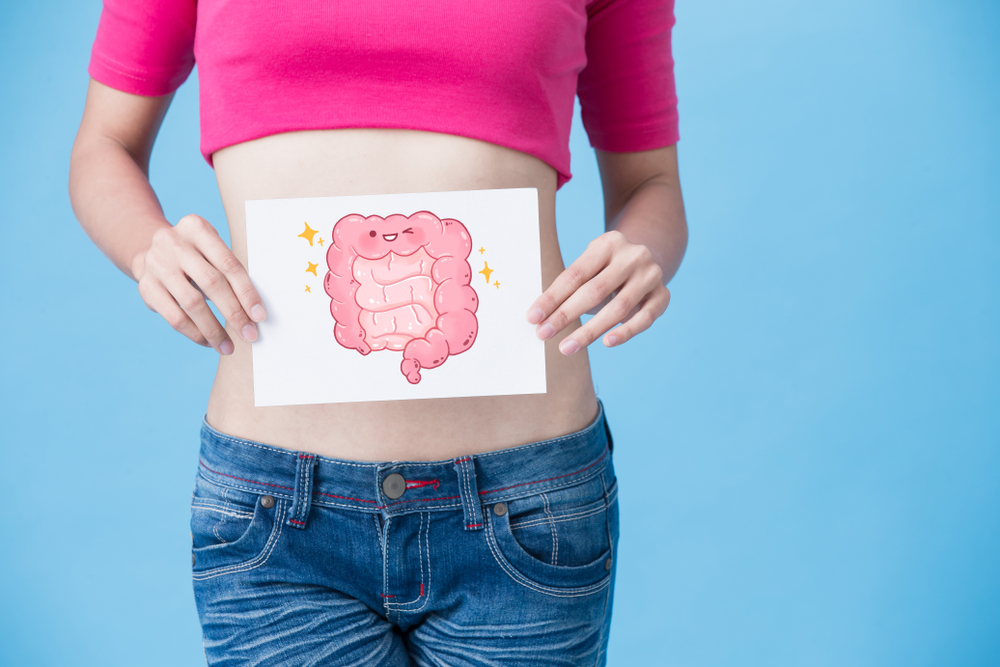Contents:
- Medical Video: Enzymes In Digestion | GCSE Science | Biology | Get To Know Science
- Get to know digestive enzymes
- Various types of enzymes in digestion
- 1. Mouth
- 2. Stomach
- 3. Pancreas
- 4. Small intestine
Medical Video: Enzymes In Digestion | GCSE Science | Biology | Get To Know Science
Have you ever thought how food is digested in the body after you are full? The digestive process of food in the body is controlled by a group of enzymes in digestion. Enzymatic digestion starts from the mouth and continues into the intestine, where all food will be converted into particles that are simpler and then released by the body. Every organ in the digestive system has an enzyme that performs its own functions.
Get to know digestive enzymes
The body's metabolism is controlled by a group of digestive enzymes, which are produced by various organs of the digestive system. Digestive enzymes play a role in regulating and maintaining the function of the digestive system.
All digestive enzymes are hydrolases, which are chemical reactions that involve adding water molecules to break down chemical bonds and enzymes.
Digestive enzymes act as catalysts (accelerating the rate of chemical reactions) for carbohydrates, proteins, and fats into a simpler form. In addition, digestive enzymes include extracellular enzymes that mix with food as they pass through the intestine.
Food digestion depends on various kinds of hydrolase enzymes produced by cells lining the intestine and related organs such as the pancreas. The ultimate goal is to break down large food molecules into very small units. Then these simple forms can be easily and quickly absorbed through the intestinal wall and into the bloodstream to be transported to the liver and to other body parts.
Digestive enzymes are broadly classified into four groups, including:
- Proteolytic enzymes: break down proteins into amino acids
- Lipolytic enzymes: break down fat into fatty acids and glycerol
- Amylolytic enzymes: break down carbohydrates and starch into simple sugars
- Nucleolytic enzymes: break down nucleic acids into nucleotides
Various types of enzymes in digestion
Your digestive system breaks down the nutrients you consume in food, turning it into a simple form that your cells, tissues, and organs use as fuel and for hundreds of metabolic functions.
It takes hours to complete this complex process, which produces simple sugars, fatty acids, glycerol and amino acids. After you break the food into small pieces by chewing it, special enzymes made from your digestive tract work to complete the process.
1. Mouth

Oral cavity contains salivary glands (saliva). Salivary glands secrete enzymes of lysozyme, betaine, bromelain, and amylase.
The lysozyme enzyme has antibacterial properties, which can provide protection against bacteria. The betain enzyme functions in maintaining the cell fluid balance as an osmolite. Bromelain has anti-inflammatory properties.
While the amylase enzyme is a digestive enzyme that works on starch in food, breaking it down into smaller forms of carbohydrates. The amylase enzyme is made by salivary glands in the mouth, which begin the digestive process by breaking down starch when you chew food and turning it into maltose, a smaller carbohydrate.
When starchy foods such as rice or potatoes begin to break in your mouth, you may detect a taste that is slightly sweet when maltose is released.
2. Stomach

The stomach secretes hydrochloric acid (HCl) which can kill bacteria and provide an acidic environment for enzymatic activity, the protease enzyme.
Protease enzymes are enzymes that break down proteins into smaller molecules such as amino acids. The digestive tract produces a number of protease enzymes, but there are three main protease enzymes, pepsin, trypsin, and chymotrypsin. However, what is produced by the gastric organ is the pepsin enzyme.
Special cells in the stomach produce inactive enzymes, pepsinogen, which turn into pepsin when you contact the acidic environment in your stomach. Pepsin breaks down certain chemical bonds in proteins, producing smaller molecules called peptides.
In addition, cells in your stomach also make other enzymes, renin, gelatinase and gastric lipase. Renin changes the protein in milk, turn it into a smaller molecule called a peptide, which is then completely digested by pepsin.
Gelatinase digests gelatin and collagen (two large proteins in meat) into medium-sized compounds whose digestion is then supplemented by pepsin, trypsin and chimotripsin, producing amino acids. Gastric lipase specifically digests the butterfat in your food.
3. Pancreas

The pancreas is the digestive tract organ which is the main source of the lipase enzyme. Lipase is an enzyme that breaks down fat into smaller molecules called fatty acids and glycerol. The pancreatic lipase enzyme works in your small intestine.
First, bile is made in your heart and released into the intestine to convert food fat into small fat clots. Then, the fat globules are converted into fatty acids and glycerol, by pancreatic lipase which is also called steapsin.
Fatty acids and glycerol are small energy-dense molecules used by all your cells. The flow of fatty acids and glycerol in the blood and lymph vessels can reach all parts of your body.
Cells in the pancreas also make another type of amylase, called pancreatic amylase. This enzyme that passes through the channel to reach your small intestine. Pancreatic amylase completes the digestion of carbohydrates, produces glucose, small molecules that are absorbed into your blood and carried throughout your body.
The pancreas also makes another group of protease enzymes, trypsin and chymotrypsin. Both of these enzymes are released into your small intestine through the pancreatic duct. When digestible food partially moves from your stomach to your intestine, trypsin and chymotripsin play a role in protein digestion, producing simple amino acids that are absorbed into your bloodstream.
In addition, the pancreas also makes a group of other enzymes, including:
- Phospholipase: simplifies phospholipid into fatty acids.
- Carboxypeptidase: breaks down protein into amino acids.
- Elastasis: breaks down elastin protein.
- Nuklease: breaks down nucleic acids into nucleotides and nucleosides.
4. Small intestine

The small intestine makes a group of enzymes that break down products that are digested by the pancreas. Cells that line your intestines make enzymes called maltase, sukrase, and lactase, each of which can convert certain types of sugar into glucose.
- Sukrase: breaks down sucrose into disaccharides and monosaccharides.
- Maltase: breaks down maltose into glucose.
- Lactase: breaks down lactose into glucose and galactose.












